-
Shakespeare's Sonnets
William James Rolfe
Hardcover (Andesite Press, Aug. 11, 2015)This work has been selected by scholars as being culturally important, and is part of the knowledge base of civilization as we know it. This work was reproduced from the original artifact, and remains as true to the original work as possible. Therefore, you will see the original copyright references, library stamps (as most of these works have been housed in our most important libraries around the world), and other notations in the work. This work is in the public domain in the United States of America, and possibly other nations. Within the United States, you may freely copy and distribute this work, as no entity (individual or corporate) has a copyright on the body of the work.As a reproduction of a historical artifact, this work may contain missing or blurred pages, poor pictures, errant marks, etc. Scholars believe, and we concur, that this work is important enough to be preserved, reproduced, and made generally available to the public. We appreciate your support of the preservation process, and thank you for being an important part of keeping this knowledge alive and relevant.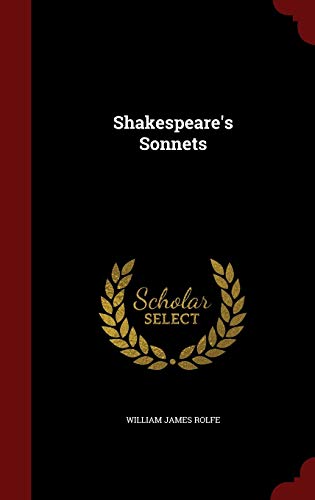
-
Sonnets
William Shakespeare
Hardcover (State Street Press, Aug. 16, 1996)Shakespeare's sonnets are a collection of 154 sonnets, dealing with themes such as the passage of time, love, beauty and mortality, first published in a 1609 quarto entitled SHAKE-SPEARES SONNETS.: Never before imprinted. (although sonnets 138 and 144 had previously been published in the 1599 miscellany The Passionate Pilgrim). The quarto ends with "A Lover's Complaint", a narrative poem of 47 seven-line stanzas written in rhyme royal.
-
Shakespeare's Sonnets
William Shakespeare
Hardcover (BiblioLife, Nov. 14, 2008)This is a pre-1923 historical reproduction that was curated for quality. Quality assurance was conducted on each of these books in an attempt to remove books with imperfections introduced by the digitization process. Though we have made best efforts - the books may have occasional errors that do not impede the reading experience. We believe this work is culturally important and have elected to bring the book back into print as part of our continuing commitment to the preservation of printed works worldwide.
-
The Sonnets
William Shakespeare
Mass Market Paperback (Signet Classics, Oct. 1, 1964)None
-
Shakespeare's Sonnets
William Shakespeare
Audio Cassette (Hodder/Headline Audiobooks, June 1, 1999)None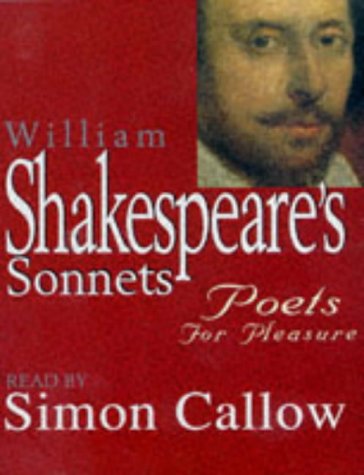
-
The Sonnets
William Shakespeare
Paperback (CreateSpace Independent Publishing Platform, Feb. 21, 2015)Mystery shrouds the publication of SHAKE-SPEARES SONNETS in 1609. There is no real question that they are authentic, but did William Shakespeare himself authorize their publication? And who is this “W.H” to whom the volume is dedicated? For that matter, is this the author’s or the publisher’s dedication? What is clear is that the sonnets of Shakespeare have come to define the English sonnet for modern readers. They contain lines (Shall I compare thee to a summer's day?) that are among the most memorable in English literature. They are romantic, brooding, jealous, and at times bawdy. They are also wondrously written and will doubtless continue their exalted place in Elizabethan literature. Z
Z
-
The Sonnets
William Shakespeare
Mass Market Paperback (Signet Classics, Oct. 1, 1964)None
-
Shakespeare's Sonnets
William Shakespeare, Flo Gibson (Narrator)
Audio Cassette (Audio Book Contractors, LLC, Jan. 30, 1995)All 154 sonnets to a friend about the woman he loves and to his muse. (One 90-minute cassette and 0ne 60).
-
The Sonnets
William Shakespeare, Fred Williams
Audio Cassette (Blackstone Pub, Jan. 1, 2000)None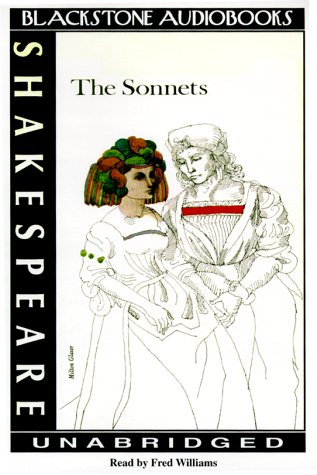
-
The Sonnets
William Shakespeare
Paperback (CreateSpace Independent Publishing Platform, July 12, 2014)Shakespeare's sonnets is the title of a collection of 154 sonnets by William Shakespeare, which covers themes such as the passage of time, love, beauty and mortality. The first 126 sonnets are addressed to a young man; the last 28 to a woman. The sonnets were first published in a 1609 quarto with the full stylised title: SHAKE-SPEARES SONNETS. Never before Imprinted. (although sonnets 138 and 144 had previously been published in the 1599 miscellany The Passionate Pilgrim). The quarto ends with "A Lover's Complaint", a narrative poem of 47 seven-line stanzas written in rhyme royal. There has been critical debate regarding its authorship. The sonnets to the young man express overwhelming, obsessional love. The main issue of debate has always been whether it remained platonic or became physical. The first 17 poems, traditionally called the procreation sonnets, are addressed to the young man urging him to marry and have children in order to immortalize his beauty by passing it to the next generation. Other sonnets express the speaker's love for the young man; brood upon loneliness, death, and the transience of life; seem to criticise the young man for preferring a rival poet; express ambiguous feelings for the speaker's mistress; and pun on the poet's name. The final two sonnets are allegorical treatments of Greek epigrams referring to the "little love-god" Cupid. The sonnets are almost all constructed from three quatrains, which are four-line stanzas, and a final couplet composed in iambic pentameter.[21] This is also the meter used extensively in Shakespeare's plays. The rhyme scheme is abab cdcd efef gg. Sonnets using this scheme are known as Shakespearean sonnets. Often, either the beginning of the third quatrain or of the last couplet mark the volta ("turn"), or the line in which the mood of the poem shifts, and the poet expresses a revelation or epiphany.[22] There are a few exceptions: Sonnets 99, 126, and 145. Number 99 has fifteen lines. Number 126 consists of six couplets, and two blank lines marked with italic brackets; 145 is in iambic tetrameters, not pentameters. In one other variation on the standard structure, found for example in sonnet 29, the rhyme scheme is changed by repeating the second (b) rhyme of quatrain one as the second (f) rhyme of quatrain three. One interpretation is that Shakespeare's sonnets are a pastiche or parody of the 300-year-old tradition of Petrarchan love sonnets; Shakespeare consciously inverts conventional gender roles as delineated in Petrarchan sonnets to create a more complex depiction of human love.[31] He plays with gender roles (20), comments on political events (124), makes fun of love (128), speaks openly about sexual desire (129), parodies beauty (130) and even references pornography (151). In a dozen of the sonnets to the youth, Shakespeare also refers to his "disgrace":[32] "My name be buried where my body is / And live no more to shame nor me nor you." Shakespeare's Sonnets can be seen as a prototype, or even the beginning, of a new kind of "modern" love poetry. During the eighteenth century, The Sonnets' reputation in England was relatively low; as late as 1805, The Critical Review could still credit John Milton with the perfection of the English sonnet. As part of the renewed interest in Shakespeare's original work that accompanied Romanticism, The Sonnets rose steadily in reputation during the nineteenth century.[33] The Sonnets have great cross-cultural importance and influence. They have been translated into every major written language, including German, French, Italian,[34] Japanese,[35] Turkish,[36] Spanish, Portuguese, Russian,[37] Afrikaans, Esperanto, Albanian, Arabic, Hebrew, [38] Welsh and Yiddish.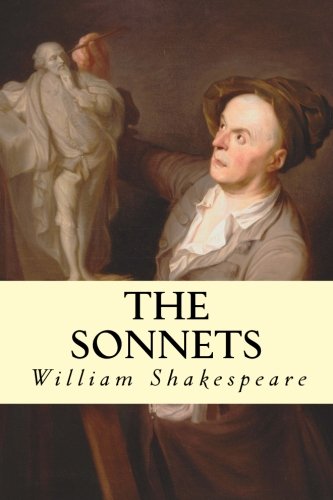 Z
Z
-
The Sonnets
William Shakespeare, Alex Jennings
Audio Cassette (Naxos Audio Books, Dec. 1, 1998)Book by Shakespeare, William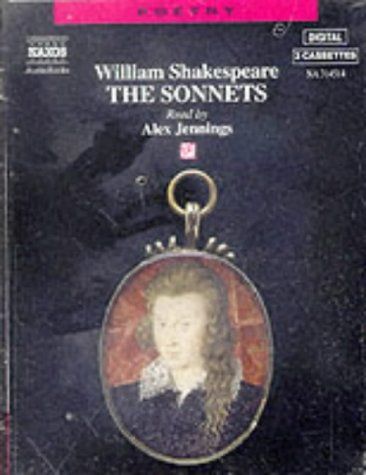
-
Sonnets by Shakespeare
Shakespeare
Paperback (Rupa, Feb. 2, 2005)Rep. of a classic collection by Shakespeare, first pub. 1609